The beauty of Venice, its inimitable landscapes, combined with the particularity of the structure make the city an open-air set, the ideal setting to set cinematic stories and add wonder to the wonder of cinema. And so many directors have decided to set their films in the streets of the Serenissima: from Death in Venice by Luchino Visconti, to Woody Allen, to the adventures of the famous secret agent 007, up to the more recent Spider Man: far from home, there are many films shot in Venice. The last great director to have brought Venice to the screen was the Oscar winner Paolo Sorrentino with The New Pope, the second season of the successful TV series The Young Pope. And it was during the 76th Venice International Film Festival last August that the first two episodes were premiered, bringing to the Lido the leading stars: Jude Law, John Malkovich and the Italian Silvio Orlando.
This is a tribute, this, to the great filmmaker, in love like us in Venice, and at the same time a pretext to take you to the locations where many scenes of the series were shot.
Don't worry, it's a NO-SPOILER story!
Journey into the aesthetic cinema of Paolo Sorrentino
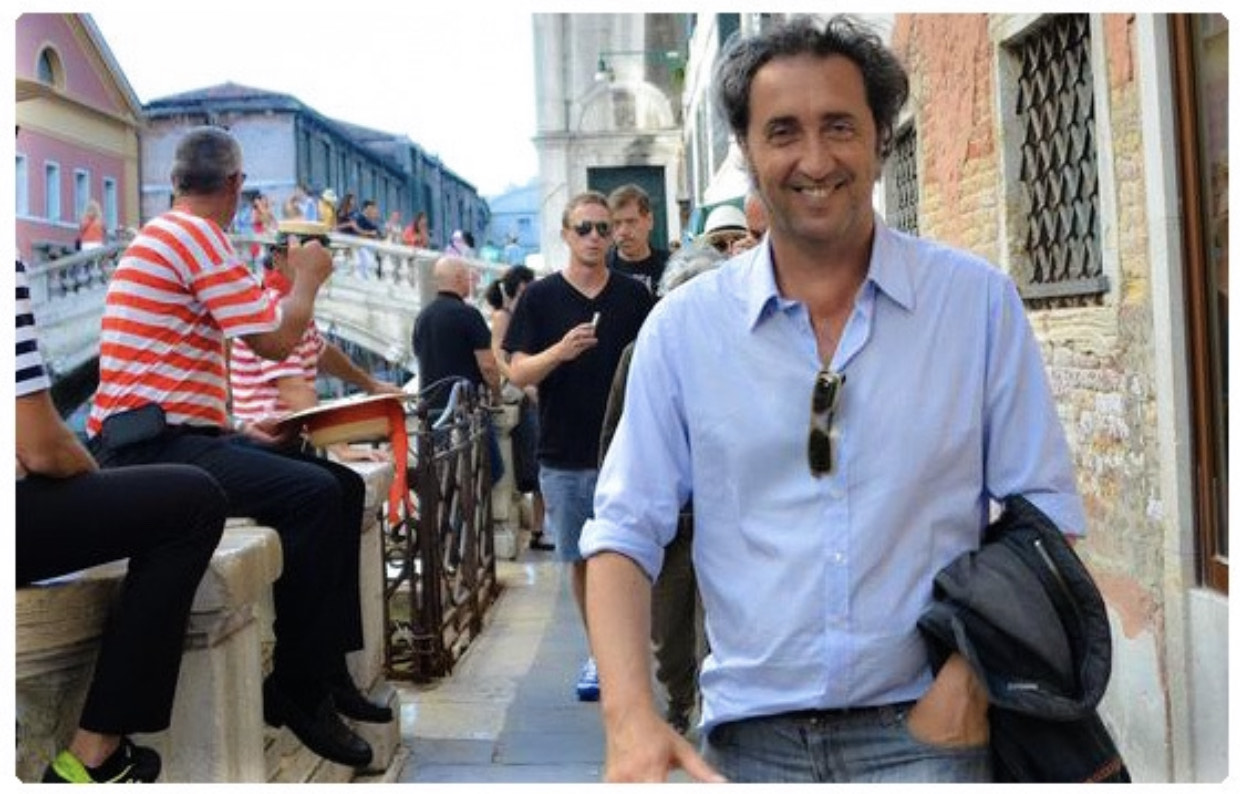
Paolo Sorrentino's cinema, which won the Oscar for Best Foreign Language Film in 2004 with La grande bellezza, is undoubtedly a very original cinema, both in terms of the staging, the construction and characterization of the characters, and the narrative itself.
In its production it always tells great themes, such as memory, religious faith, old age, youth. His first works L'uomo in più, Le conseguenze dell'amore, L'amico di famiglia, are successful films because of the way they succeed in telling a story that then mixes with the cinematic sense that has become the true hallmark of the Neapolitan director.
But the characters created by the director all share a strong sense of decay, the weight of failure in their lives and a sort of nostalgia for the past.
This decadence, however, is veiled with the exhilarating beauty of the images, which stand as a symbol of a time now lost. It is as if Sorrentino chose to make up for the ugliness of life, to powder certain mean and empty existences, arriving at a seductive, bewitching reality.
Sorrentino's cinema is obsessed with the ideal of beauty that images must spring from, so the shots and editing, the movements of the camera and even the position of the actors on stage become icons: marvellous in support of the narrative, at times, steady and motionless in pure visual exaltation, at others.
The Neapolitan director's works move in a strong ambiguity between beauty and horrible reality: a grotesque, almost Goldonian grotesque, that manages to make space in an overbearing way in the harmonious balance of beauty, and beauty, that aspires to eternity, manages to make space in the bastard dynamics of life, as a sort of "despite everything...".
A cinema that is certainly exalting, until the aesthetic component is excessive, and the harshness of life, with its dynamics and inner conflicts that tear the characters apart, is not lost by being harnessed in a certain form of beauty that cannot go beyond the image: it is as if one floats perennially on the surface, without being able to sink and touch reality, or oneself. And so the images, almost pictorial, are unable to find a link with the narrative, relegating the narrative dynamic to a secondary plane that almost escapes, being unfortunately elusive. This is the criticism that often moves to Sorrentino: sequences that apparently have no sense within the narrative structure of the feature films, but which exist, like certain speckled characters, and are decontextualized solely to give the work a sort of fashionable ambiguity, irreverence and provocation at all costs.
At the beginning of his production, Sorrentino's cinema was not like that, because the images were inserted within the narrative fabric without ever putting themselves in the foreground, but becoming narrative themselves. This is the way it is from his most recent films, from La grande bellezza onwards: a cinema that risks becoming a parody of itself, that overturns and becomes pure mannerism, where this bulimic accumulation of images does not always attribute an added value to the film.
However, Sorrentino's cinema remains a great cinema, which we like and believe to be an Italian pride, which actively participates to the diffusion of our works. A way of making cinema that undoubtedly divides those who hate it and those who love to be fascinated by the aestheticism of his works, managing to draw personal reflections from the multitude of images: on the other hand, cinema is art, and art escapes objectivity. Always.
In The New Pope the aesthetics of images mixes well with interactions on the burning themes of the existence of God, the powers that govern the Vatican, the shadow of Islamic terrorism. A fundamental role is played by the continuous oppositions, such as those of the characters and their double life that leads back to a kind of double soul, such as those of open and closed spaces in which the search for symmetry becomes obsessive, such as absences and presences, the present and the eternal, the intimate fragile and swaggering, the beauty of statuesque bodies, an evident sign of God's presence, and the malformation of those chastened by nature, an evident sign of God's absence, which then reveal themselves as the purest and truest souls.
It's as if Sorrentino was telling us that to be a believer we must be credible.
During a recent interview, Sorrentino was asked why he had decided to set most of the two series in Venice, the answer was the most banal but also the most appreciable: "Life is short and you have to stay as much as possible in beautiful places!". Venice is therefore the ideal place in which to set a film story that deals with the themes of ambiguity: on the other hand, it has always lived among a thousand contradictions, such as that of being a city in perennial balance between land and water, which has seen lights and shadows, powerful but extremely fragile, which reflects and is reflected in the very soul of the protagonists, Lanny Belardo and John Brannox.
Cini Foundation
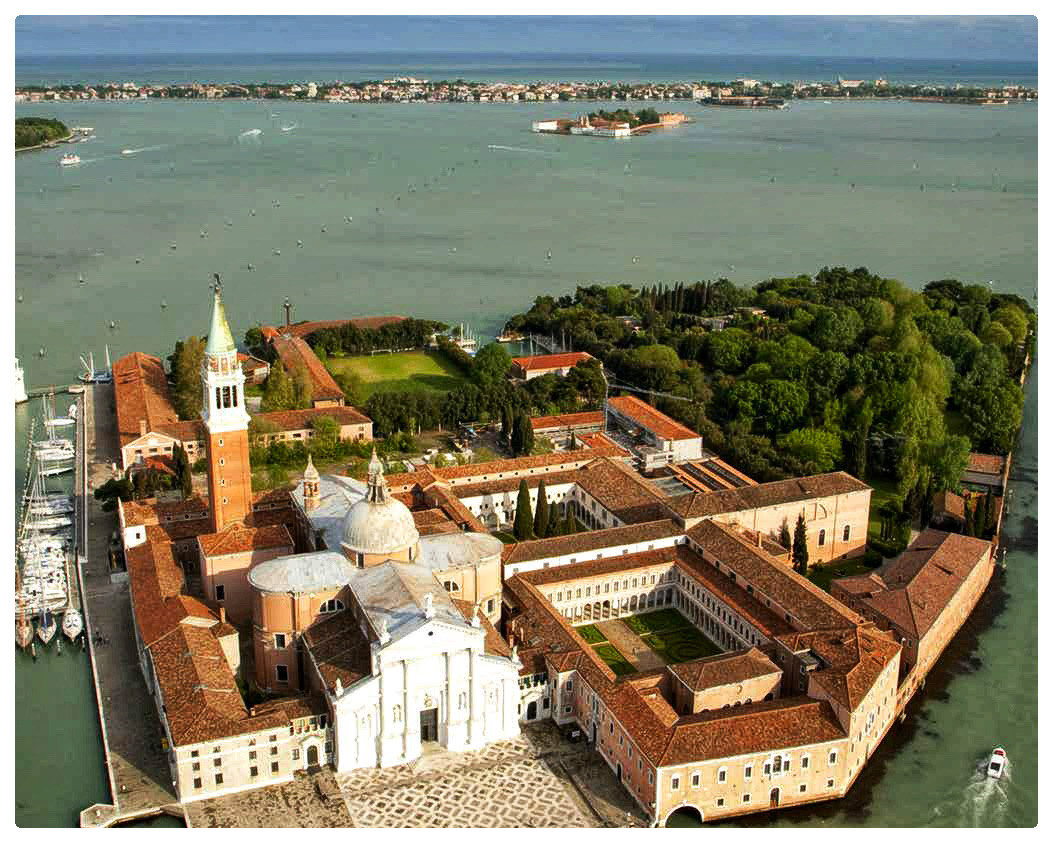
The opening theme song of The New Pope stars a group of nuns who let themselves go to a sensual and cheeky dance under a cross that emits psychedelic lights, to the notes of Good time girl of the group Sofi Tukker. The sequence was filmed in the Refectory of the former Benedictine Convent of San Giorgio Maggiore on the island of the same name, now home to the Cini Foundation, an art and culture centre. It was founded in 1951 by Vittorio Cini in memory of his son Giorgio, who died in tragic circumstances in 1949. The Foundation is an internationally recognised cultural institution: it is a study centre and meeting place, but also an exhibition space of great interest and fervour, and a complex librarian that preserves ancient volumes on literature, music, art and theatre. A space where art and social and political current affairs, scientific activities and multidisciplinary research meet.
The general structure of the Complex is characterized by the presence of 3 fundamental elements. The first dates back to the end of the 15th century and is the large and bright space of the Manica Lunga, designed by the architect Giovanni Buora, together with the Benedictine dormitory, which today houses the library. From 1560 onwards, the master Andrea Palladio intervened and built the new refectory, renovated the old Gothic church and the splendid Renaissance cloister, whose harmonies of the master's architecture make it a perfect place for meditation. The baroque intervention of Baldassare Longhena dates back to the end of the 17th century: the triumphant Monumental Staircase, which allows access to the abbot's private apartments, and the Library, decorated with wooden bookcases designed by the master, were built. The Borges Labyrinth, a reconstruction of Randoll Coate's famous garden-labyrinth in honour of Jorge Luis Borge, was recently completed. For this work, the Cini Foundation collaborated with the Fundación Internacional Jorge Luis Borges to pay homage to the Argentinean writer at the age of 25 since his death, transforming his famous story The Garden of forking paths into a pleasant green walk.
After the terrible periods of the fall of the Serenissima and the world conflicts, the revival and rebirth of this marvellous place in the Venetian Lagoon is due to the mad and obstinate work of Vittorio Cini.
Last January the Patriarch's delegate for Cultural Heritage, Arch. Don Gianmatteo Caputo, harshly criticized the opening scene filmed by Sorrentino and his troupe in the Foundation, considering it provocative and little contextualized, defining the concession of the space as "yet another case of abuse of Venice and historical places".
Who knows if Sorrentino at the Foundation had chosen to set the recitation of a Rosary, if Don Caputo would have considered it an abuse anyway...
Giovanni and Paolo Saints Civil Hospital
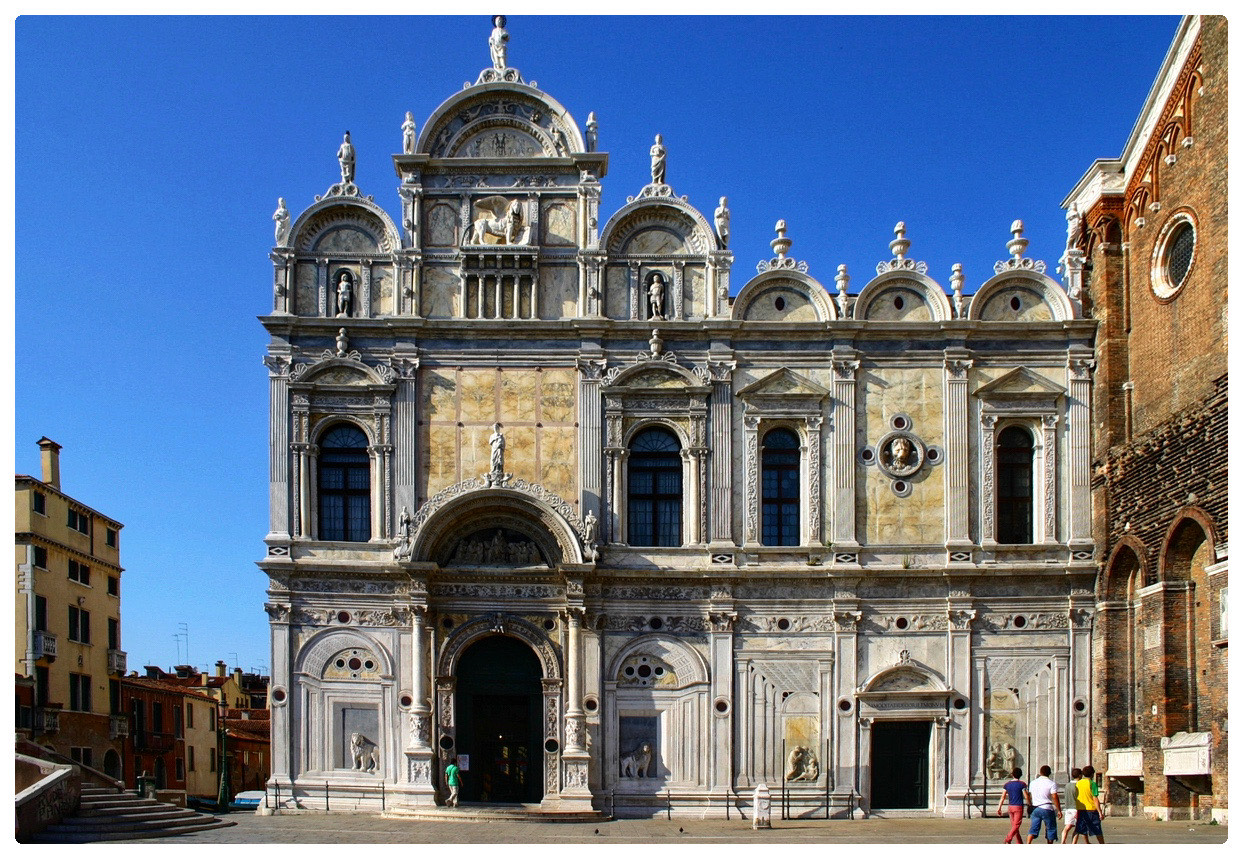
A wonderful room shrouded in twilight, the relaxed body of a man immobile in the light of a cross, and a breath that spreads in the air: this is how The New Pope begins.
That room is in the Santi Giovanni and Paolo Hospital, the hospital complex of Venice.
And what is now a health facility, incorporates what was once the Scuola Grande di San Marco. The schools, in the Republic of the Most Serene Republic, were institutions built to give assistance to the needy, while the Scuole Grandi was a place properly built to host the brethren, to which the nobles and the wealthiest of society adhered. These structures were always dedicated to the veneration of a Saint, whose name they then bore.
The Scuola Grande di San Marco is located in Campo Santi Giovanni and Paolo, next to the basilica of the same name. Built in 1260, it was then rebuilt in a clear Renaissance style by Pietro Lombardo. The polychrome marble facade is splendid, a harmonious balance of elements of the Renaissance vocabulary, such as the pilasters and window frames, the upper gables sloping down to form arches in the sky. Wonderful the portal with the sculptures of "St. Mark and his brethren" by Bartolomeo Bon, in the lunette of the tympanum, and "Charity" by Pietro Lamberti on the top of the tympanum itself. Both are guarded by the sculptures of the two lions that seem to escape the immobility of the marble.
Once you cross the threshold you reach the great Entrance Hall, bare of any work of art, but a work of art itself: a long procession of very high pedestals on which slender columns support the dark wooden beams ceiling.
Upstairs, on the other hand, is the Chapter Hall, for the plenary assemblies of the Confraternity, with its marvellous coffered ceiling in chiselled wood and painted in gold tones.
The structure contains works by Giovanni and Gentile Bellini, Giovanni Mansueti, Jacopo and Domenico Tintoretto, Palma il Vecchio, Paris Bordon and Palma il Giovane.
The first level hospital, which turned 200 years old in 2019, has seen the work of great doctors who made the history of the capital of Veneto, from Giuseppe Jona, who sacrificed himself not to reveal the names of doctors of Jewish origin during the Nazi-Fascist period, to Davide Giordano, master of surgery.
Campo Santi Giovanni e Paolo

The "Campo", small squares surrounded by buildings, take part in the creation of the typical Venetian landscape. Some scenes of The New Pope are shot in Campo Santi Giovanni e Paolo, located in the Castello district and bordered by the Rio dei Mendicanti. The Campo has always been considered one of the most important in Venice, here parties and ceremonies were often organized, in the Republican era the remains of the Doges and high representatives of the Republic passed before the celebration of the funeral in the Basilica of Santi Giovanni e Paolo.
In the Campo there is an equestrian statue made between 1480 and 1488 by Andrea Verrocchio, dedicated to the leader Bartolomeo Colleoni who fought with his army of mercenaries for the Kingdom of Naples and for the Serenissima Republic. At the center of the field there is a typical Venetian well, the vera da pozzo, dating back to 1500, decorated with putti that hold festoons of fruit.
Beaches on the Lido of Venice
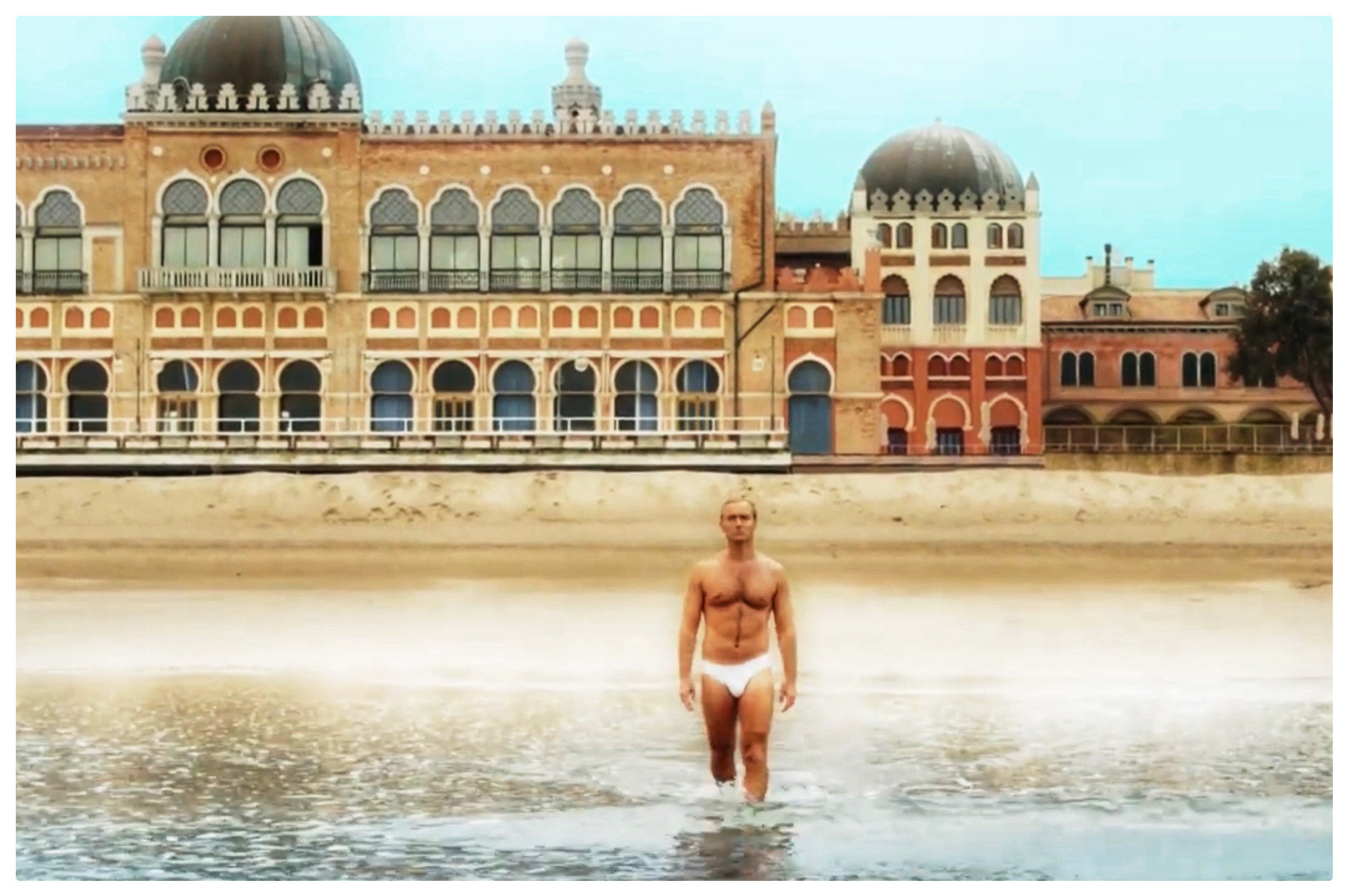
The Lido of Venice is known all over the world because it hosts the Film Festival which is held annually inside the Palazzo del Cinema and in other rooms of the Biennale. In a scene from The New Pope, Jude Law is on the beach, behind him is the facade of one of the most famous hotels on the Lido, where in 1932 the first Mostra del Cinema took place, conceived by Giuseppe Volpi: today the Volpi Cup, prizes for the best male and female performances, is so called as a tribute to Giuseppe.
In addition to the cinematographic places of interest, the Lido island is full of Art Nouveau buildings and parks. Until the first half of the nineteenth century, the Lido was a rural area cultivated by orchards and little frequented compared to the rest of the city, a place where a peaceful and elegant atmosphere reigns. From the end of the century it established itself as a seaside destination and numerous visitors of aristocratic origin began to populate the area of tourist interest. At the beginning of the 1900s large hotels were built and a connection system was established with the Santa Lucia station.
Among the places of interest on the Lido there is certainly "the island within the island", we are talking about Malmocco, the first historical nucleus of Venice: today is a very characteristic small village that with its calli, fields and canals is remembered as a miniature Venice, houses the church of Santa Maria Assunta, built in the fifteenth century. Several buildings from the late Nineteenth century are clearly visible in the center of Santa Maria Elisabetta, where it is possible to visit the church of the same name. One of the main attractions of the Lido are undoubtedly the beaches, which every summer attract large numbers of tourists, including foreigners. The most famous are the free beach of Alberoni and San Nicolò, while for lovers of wild relaxation there are the rocks of the Murazzi, also ideal for cycling.
Palazzo Donà delle Rose
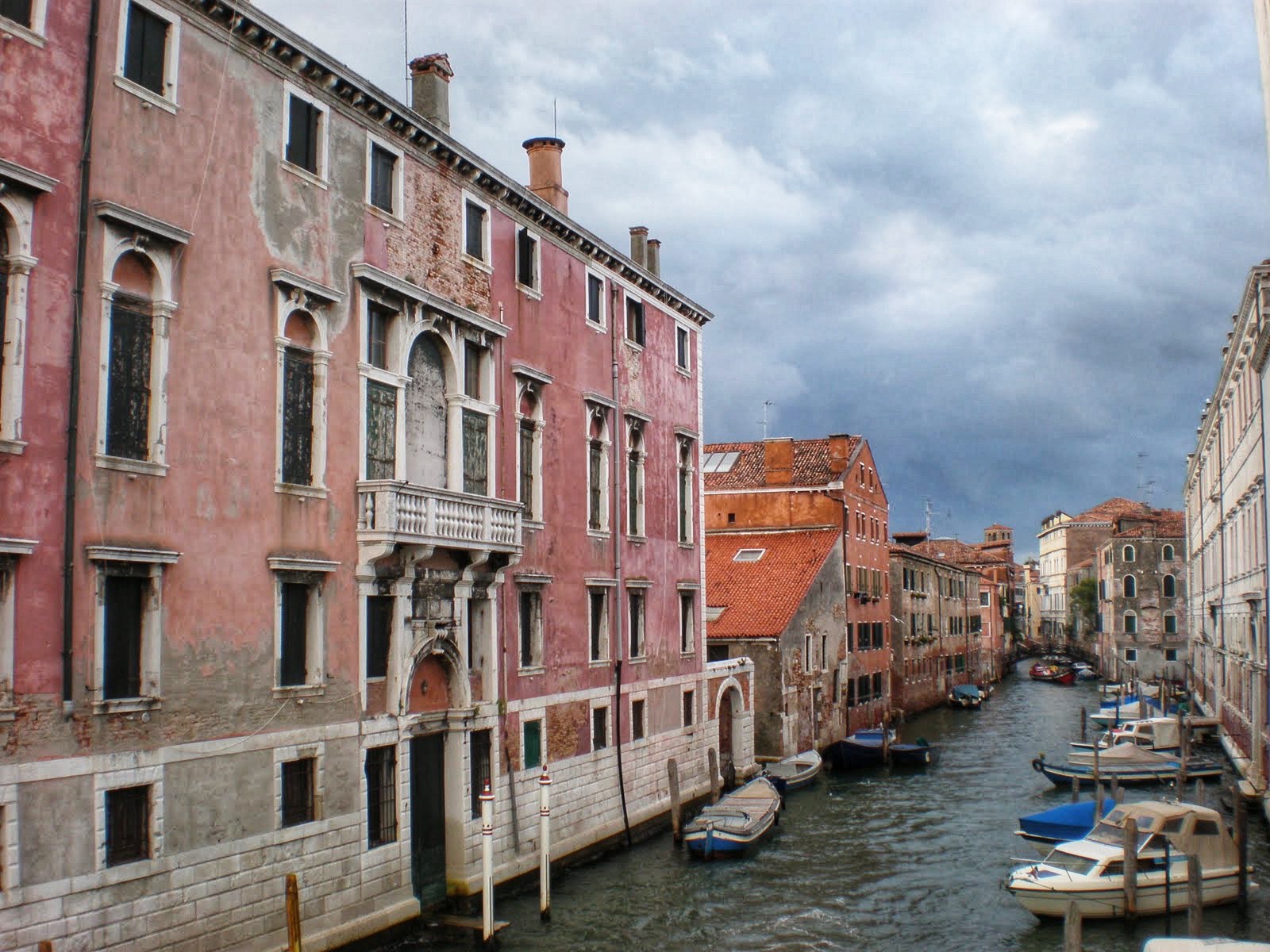
During the filming of The New Pope, Palazzo Donà delle Rose was armored for a month to allow Paolo Sorrentino and his tropue to shoot the scenes of the TV series with Jude Law and John Malkovich.
The history of the Palace is quite unique: built around 1600 at the behest of the Doge Leonardo Donà delle Rose, who died before he could see the work completed, the building has a very austere architectural design, devoid of any decoration. It seems that the explanation lies in the choice of the designer, the jurist friar Paolo Sarpi, a brotherly friend of Leonardo's, but an amateur architect with few skills to be able to complete a work worthy of being remembered. But, it is also said that it was the Doge himself who wanted a dwelling devoid of any ornament, declaring his firm will: "no architecture for the Doge's house". The palace, moreover, is very isolated, being situated in the Sestiere di Cannaregio, in the area open towards the North Lagoon: it was, at the time, an area of recent construction, near which there was a cannon foundry, resulting outside the living dynamics of the Republic and the crowded and worldly circuits of the city.
In fact, today the Palace has two imposing facades, one on Fondamenta Nove with entrance, and one on the Rio dei Gesuiti with two water gates, one with cavana for the access of boats. The only scenographic element of a facade completely devoid of exalting elements is the serliana on the main floor, which gives a pleasant chromatic detachment with the simple surface plastered in the typical Venetian red.
More interesting is the interior, with the splendid atrium and the portego of the ground floor, in which a magnificent marble floor stands out, clearly visible in the Sorrentino series, and the main floor , where the baroque decorations of the portego over which the other private rooms of the dwelling open, and a sign of a remake between the eighteenth and nineteenth centuries, triumph.
The Palace, today, still belongs to the patrician family of origin Donà delle Rose who gave permission for the production of the TV series to shoot inside it: the only case in Venice that a historic building is also the property of the family that built it.
“Power and mortal sin are the same thing, Jerome. I've always known. The others arrive fresh fresh and delude themselves that they can split this indissoluble bond. It is a bond that has established God, without telling anyone. How many have I seen who have tried it! They are all out of fashion, only I never go, like Kinder bars! "
cit. Cardinal Angelo Voiello, The New Pope
The power of images that mixes with the power of the suggestion of incredible places!
Will it be a mortal sin?










Lascia un commento